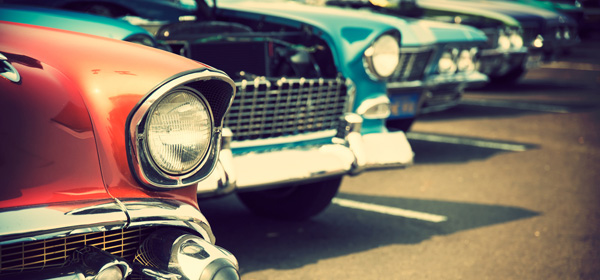Do you still drive a Ford Escort, Toyota Corolla or Holden Torana from the 70s? Cars like these are becoming popular investments for nostalgic types who remember being ferried around in them as kids.
And they are willing to pay more than $100,000 for a model that is in excellent condition, according to Christophe Boribon, National Auctions Manager at Shannons Auctions.
Mr Boribon says there is growing interest in early models from previous non-enthusiasts of classic cars.
“I was in the US a couple of weeks ago to attend a giant classic car auction and was astounded that they managed to sell $400 million worth of vehicles,” he told YourLifeChoices. “It is definitely a big thing overseas and I can see that it is gaining in popularity here as well.
“There are old models around that today will fetch double, triple and even quadruple what you paid for them in the year they were manufactured.”
He said that Ferraris from the 50s, 60s and 70s are consistently sought after by all age groups, but for the most part a generational factor influences purchases.
“If you are in your 50s and 60s, you are more likely to be interested in post-war classics rather than vintage cars.”
However, he warned that not all classic cars were worthy of an investment.
“We currently have a 1967 Shelby Mustang GT500 Fastback that we believe is worth more than $250,000. And a Ford Mustang Coupe from the same year that by contrast will probably fetch around $26,000 to $32,000.
“The difference is that the Shelby is a limited edition with only about 399 of them ever built, whereas the Ford model would have been mass produced. It is the rarity of the model, apart from its condition, which sets the price,” said Mr Boribon, who has a number of auctions scheduled from next week in Melbourne and Sydney.
And therein lies the rub. Not all assets are equal, as the unhappy owners of a variety of non-financial investments will attest.
Fine art
Unless you can afford a Picasso, you may be mistaken if you invest in art hoping that a few years down the track you can sell the work and make a hefty return.
Researchers at Stanford Business school found that “the returns of fine art have been significantly overestimated, and the risk, underestimated”.
After scouring the Blouin Art Sales Indices between 1972 and 2010, the researchers decided that selection bias was at play when art investment returns were reported by analysts.
Rather than the often reported gain of 10 per cent a year during that period, the researchers said the returns of the asset class were closer to 6.5 per cent.
Rare coins
Four years ago, the superannuation balances of thousands of Australians were wiped out when Western Australia’s Rare Coin Company went into liquidation. At the time, the Australian Securities and Investments Commission (ASIC) said investors should stay away from high-risk, high-rewards gambles, such as those taken by the fund members.
While trading in rare coins can be lucrative, like fine art, you have to know the market very well before taking a punt.
“The Rare Coin Company was a large dealer in the market, but the market turns over between $400 to 500 million per year,” Australasian Numismatic Dealers Association President Andrew Crellin told ABC News.
“Although it’s a significant event, no company or dealer is bigger than the entire market. We have confidence in the market and that this will be digested in the fullness of time.
Related articles:
What are my investment options
Investing on a budget

